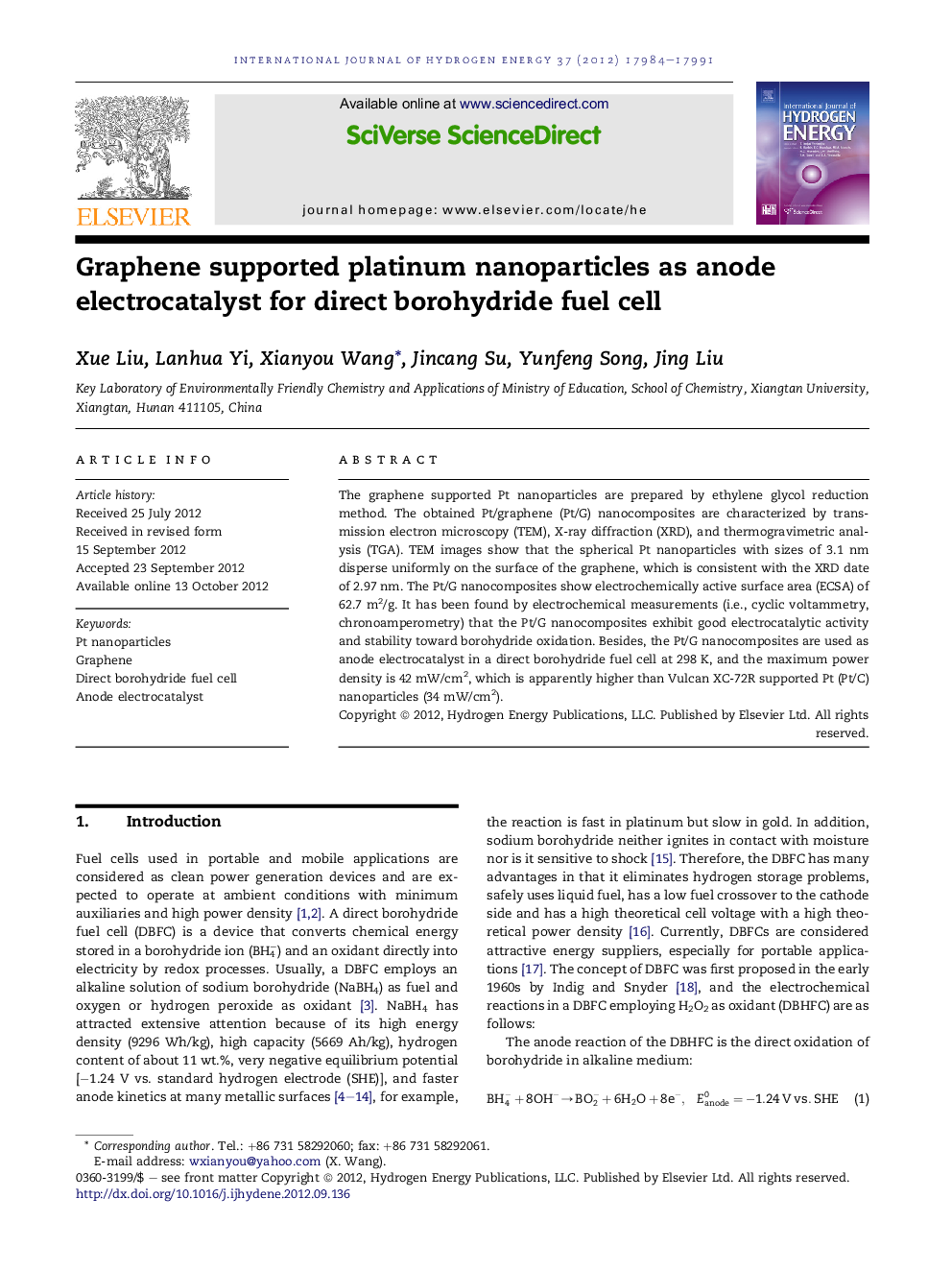| Article ID | Journal | Published Year | Pages | File Type |
|---|---|---|---|---|
| 1278318 | International Journal of Hydrogen Energy | 2012 | 8 Pages |
The graphene supported Pt nanoparticles are prepared by ethylene glycol reduction method. The obtained Pt/graphene (Pt/G) nanocomposites are characterized by transmission electron microscopy (TEM), X-ray diffraction (XRD), and thermogravimetric analysis (TGA). TEM images show that the spherical Pt nanoparticles with sizes of 3.1 nm disperse uniformly on the surface of the graphene, which is consistent with the XRD date of 2.97 nm. The Pt/G nanocomposites show electrochemically active surface area (ECSA) of 62.7 m2/g. It has been found by electrochemical measurements (i.e., cyclic voltammetry, chronoamperometry) that the Pt/G nanocomposites exhibit good electrocatalytic activity and stability toward borohydride oxidation. Besides, the Pt/G nanocomposites are used as anode electrocatalyst in a direct borohydride fuel cell at 298 K, and the maximum power density is 42 mW/cm2, which is apparently higher than Vulcan XC-72R supported Pt (Pt/C) nanoparticles (34 mW/cm2).
► Pt/G nanocomposites are prepared by ethylene glycol reduction method. ► The mean diameter of Pt nanoparticles is 3.1 nm. ► The ECSA of Pt/G electrode is 62.7 m2/g, which is larger than that of Pt/C. ► In DBFC, the maximum power density for Pt/G and Pt/C catalysts is 42 and 34 mW/cm2.
